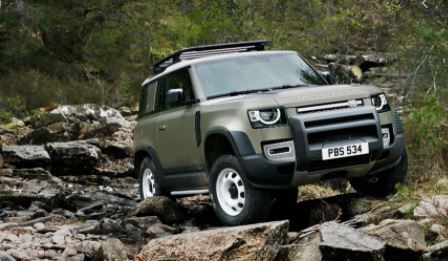The law provides that a product shape can be registered as a trade mark or, as it is sometimes called, a "badge of origin". But in practice, registering product shapes as trade marks can be very difficult, particularly in the UK as a recent product shape court decision illustrates.
The case was Jaguar Land Rover Ltd v Ineos Industries Holdings Ltd. The case involved what many would consider an iconic product shape, the shape of the Land Rover Defender. This vehicle is certainly much loved in Africa, where it is almost synonymous with African pursuits such as game watching. Jaguar Land Rover ("JLR") applied to register the shape of the Defender as a trade mark in the UK. Six applications relating to the Land Rover 90 and 110 models were filed in a number of classes (9, 12, 14, 28 and 37). These applications covered, inter alia, vehicles and repair services.

JLR's applications were accepted by the UK IP Office ("UKIPO"), but they were subsequently opposed by a company called Ineos. The opponent threw the book at JLR, arguing the shape is not capable of being registered; the shape lacks inherent distinctiveness; the shape has become customary in the trade; the shape results from the nature of the goods; the shape achieves a technical result; the shape gives substantial value to the goods; registration would be contrary to public policy; and the applications were filed in bad faith.
Ineos may be a new name to you, but it's the company of the UK's richest man, Sir Jim Radcliffe. Ineos unsuccessfully sought to buy the tooling and production equipment for the Land Rover Defender after JLR ceased production, and it plans to bring out its own Defender-like vehicle. The company's opposition was upheld by UKIPO, and JLR took the matter on appeal to the High Court. Judge Melissa Clark refused the appeal.
The judge was not persuaded that the shape of the Defender was as different from other vehicle shapes as JLR contended it was, or that it acts as a badge of origin. The judge said that JLR had been unable to establish acquired distinctiveness for the shape through survey evidence. She said that the shape of the Defender "may be unimportant, or may not even register, with average consumers". As for evidence from journalists and "Defender aficionados", the judge described this as being "obviously hyperbolic" and said that the UKIPO Hearing Officer had been right not to attach much importance to it. At the end of the day, it was the brand names Land Rover and Defender that were performing the trade mark function.
So, where does this leave South Africa? There's no doubt that getting trade mark protection for product shapes in the UK is no easy matter. The law in the UK may be roughly the same as it is in South Africa, but the application of the law seems to be very different. So, for example, the UK courts have in the past refused trade mark protection for the shape of the classic London cab, something that may have been regarded by many as something of a slam dunk. The UK courts have also refused trade mark protection for the shape of the Kit Kat bar. Yet, the South African Supreme Court of Appeal had no problem upholding South African trade mark registrations for the shape of the Kit Kat bar a few years back.
As for the rest of Europe, it's probably safe to say that the authorities there are a bit stricter in these matters than the authorities in South Africa. Yet, they are probably not quite as strict as the authorities in the UK, as a very recent decision shows.
In a German case, the court recognised trade mark rights in the square shape of the Ritter Sport chocolate bar. The evidence there showed that the shape goes back all the way back to 1932, having been designed to fit into a jacket pocket, and having been used with the slogan "quality chocolate squared". A trade mark registration for the shape had been attacked by the rival chocolate maker Milka. The opponent had raised various grounds: the shape resulted from the nature of the goods, the shape was necessary to obtain a technical result, and the shape gave substantial value to the goods, but the court upheld the registration. It found that the shape did not give or add any significant value to the product. It further found the shape was independent of its function.
Based on this, we do feel that there is still scope for the protection of product shapes under South African trade mark law. This is, of course, in addition to the protection that's possible through registered designs, where novelty is the main consideration, but that's a topic for a separate article!
Originally published by ENSafrica, August 2020
The content of this article is intended to provide a general guide to the subject matter. Specialist advice should be sought about your specific circumstances.


